Introduction
We learnt in Grade 3 that the things around us are made from different materials. But have you ever wondered how these things are made?
Let’s find out with Pihu how paper is made.
One Sunday, Pihu was happily painting in her drawing book. Her mother was reading the newspaper. When Pihu looked up, she saw a picture of trees on the front page of the newspaper. She became curious and started thinking about how paper is made from trees.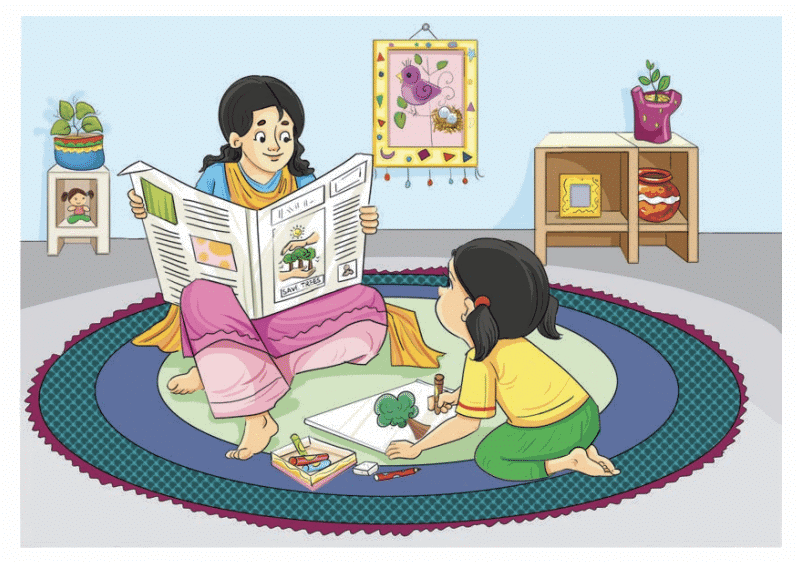
Making Recycled Paper
Paper is made from materials like wood pulp, but we can also create it from old paper to save trees. 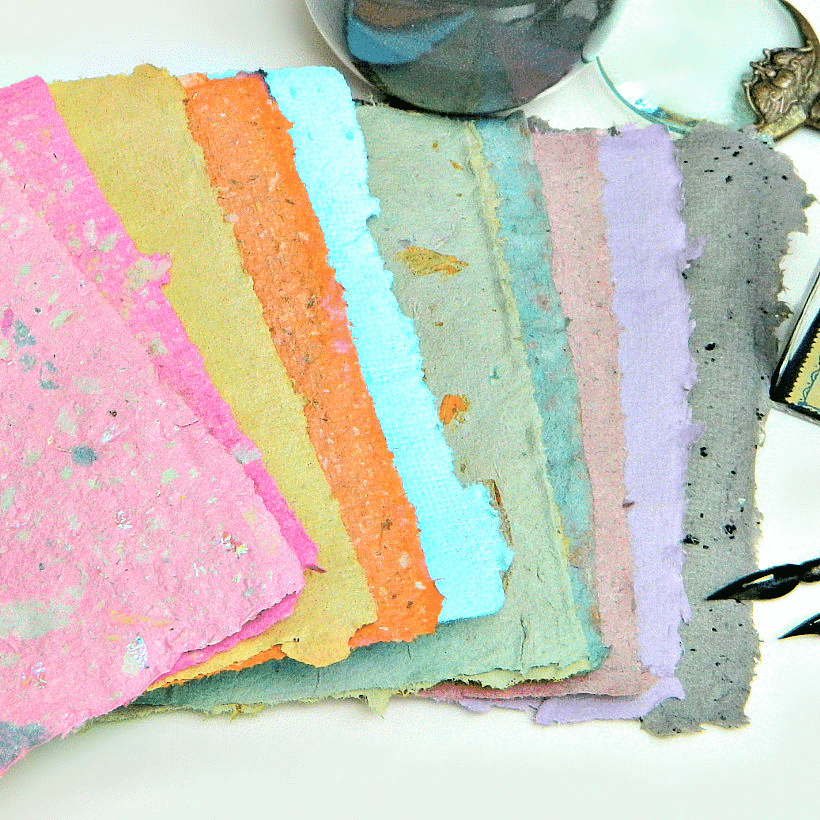 Pihu learned to make recycled paper through these simple steps:
Pihu learned to make recycled paper through these simple steps:
- Tear old newspapers into small pieces and soak them in water with fenugreek seeds overnight. The seeds help bind the paper.
- Mash the soaked paper and seeds into a wet mixture using a grinder or your hands.
- Spread the mixture on a flat surface and roll it into thin sheets.
- Leave the rolled sheets of paper to dry. Your recycled paper is ready!
- The paper we see in books looks different from recycled paper as it is made from wood pulp. Making paper requires many trees, water, and energy, so we should use it carefully.

Activity 2- Let's Explore Natural Colour Experiment
You can make recycled paper colourful by using natural ingredients from plants, such as leaves, roots, or flowers. Thus, the produced natural dyes are safe to use.
- Cut recycled paper into equal pieces.
- Use natural ingredients like turmeric, spinach, beetroot, or henna to colour the paper.
- For instance, turmeric gives a dull yellow colour.
- Observe and note the colour and brightness (dull or bright) of each piece.
- Natural dyes are made from different parts of a plant, including the leaf, flower, root, seed, stem, etc.
Question for Chapter Notes: How Things are Made
Try yourself:
What can be used to color recycled paper?Explanation
Natural ingredients from plants, such as leaves, roots, or flowers, can be used to color recycled paper. For example, turmeric is mentioned as giving a dull yellow color.
Report a problem
A Special Gift
Pihu created a lovely greeting card from recycled paper and gave it to her mother, who really appreciated it.
- These creations are special because you make them and help to reuse and repurpose materials.
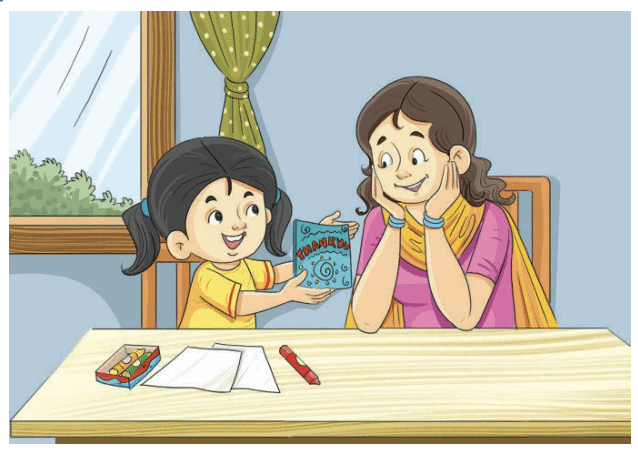
Activity 3- Let’s Explore! Make a card or mask using recycled paper.
Q: Make a greeting card, a paper mask, or any item using recycled paper.
Ans: Students, please try this question on your own.
Suggestion:
- Use the recycled paper you made to create something fun, like a greeting card or a paper mask.
- For a greeting card: Fold the paper, draw a nice picture, and write a message. You can colour it with natural dyes.
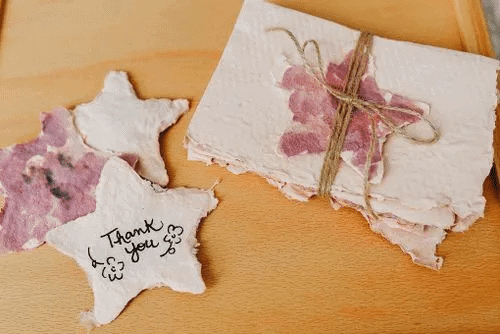
- For a paper mask: Cut the paper into a mask shape, add designs, and make holes for eyes. Tie a string to wear it.
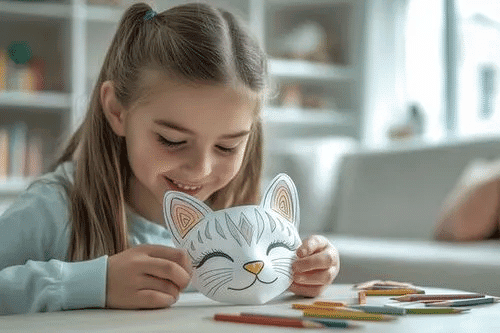
- Be creative and decorate your item with natural colours or patterns!
Did You Know?
- The paper used in books is made from wood pulp.
- For this, many trees are cut down.
- Making paper also uses a lot of water and energy.
Be Responsible
- Use paper wisely and only when needed.
- Reusing and recycling paper helps save trees and protect the environment.
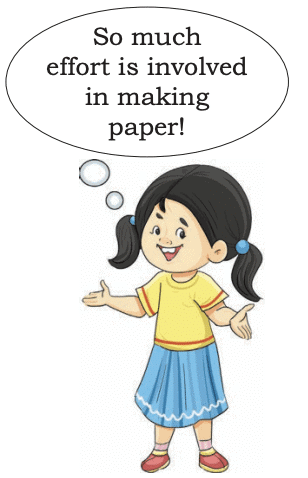
Did You Know?
In olden times, people did not use paper like we do today. They wrote on cloth, leaves, and wooden boards.
In India, people used special palm leaves called talapatra for writing. Today, we can use eco-friendly materials like banana fibre to make paper.
These materials help save trees and keep the environment safe.
Activity 4- Types of Paper and Uses
Observe different types of paper like writing paper, newspaper, art paper, cardboard, and tissue paper. Paste small pieces of these papers and write their uses.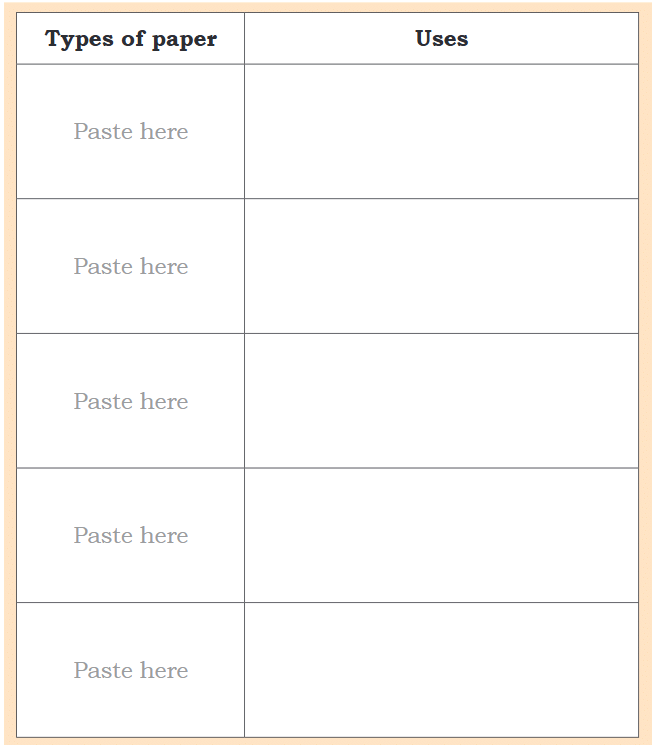
Ans: Students, please try this question on your own.
Suggestion: Collect small pieces of different papers. Paste them in your notebook and write their uses. We use different kinds of paper for various purposes. For instance: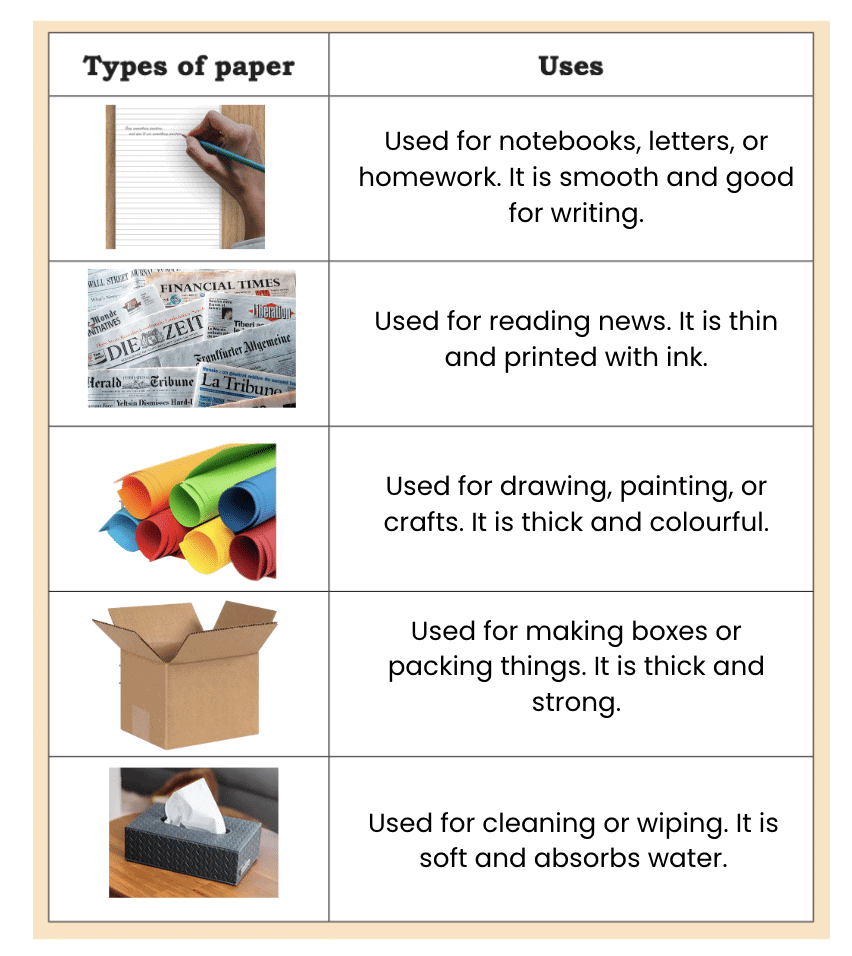
Did You Know?
The Braille system helps people who can't see to read and write. It uses small raised bumps on paper that can be felt with the fingers. These bumps stand for letters, numbers, and punctuation marks, allowing visually impaired people to read and write on their own.
Making Responsible Choice
In our daily lives, we can adopt a 5-step plan to minimise waste, known as the 5Rs of waste management:
- Refuse: Decline items that create waste, such as single-use paper cups.
- Reduce: Use paper wisely, like writing on both sides of a sheet.
- Reuse: Use items multiple times, like reusing a gift bag.
- Repurpose: Find new uses for old paper, like making toys or decorations from newspapers.
- Recycle: Transform old paper into new paper, such as making recycled paper.
Activity 5: Let's Learn About the 5 R's in Our Daily Life
Q: Discuss the following situations with your classmates and write which of the 5Rs (Refuse, Reduce, Reuse, Repurpose, Recycle) each belongs to:
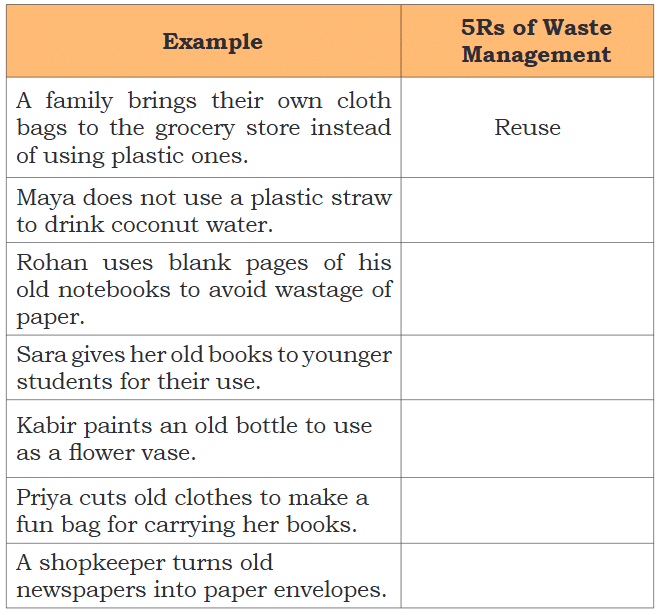
Ans:
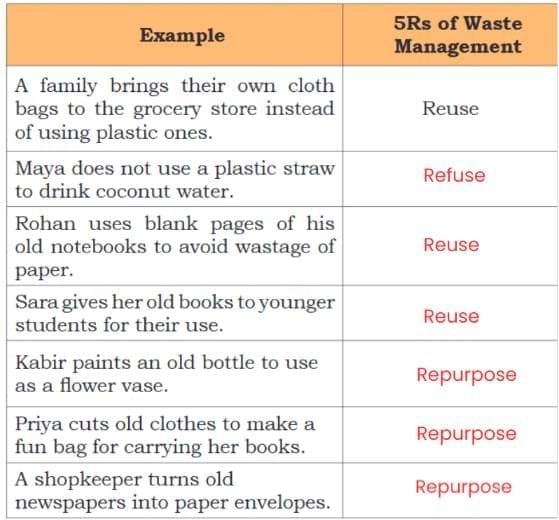
Let’s Have Fun with Paper!
We can make many fun and useful things using old paper.
Here are some cool ideas to create toys and decorations with used newspapers.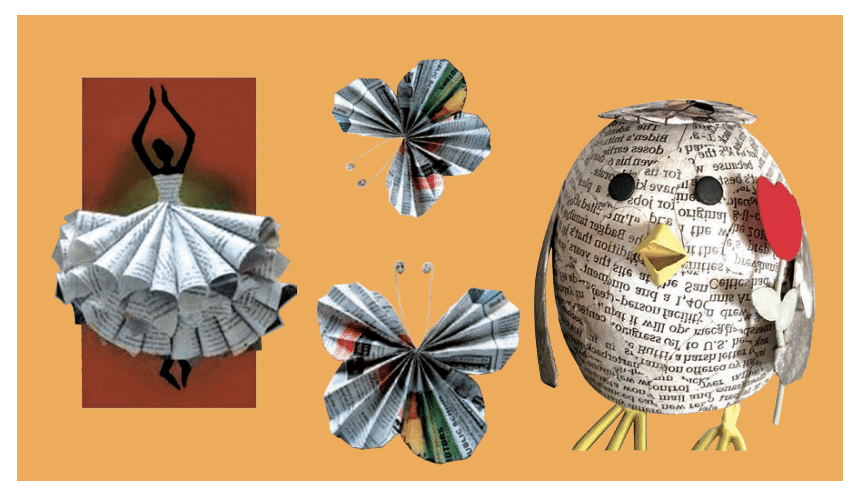
Let’s get creative and give old paper a new life!
Question for Chapter Notes: How Things are Made
Try yourself:
What did Pihu create for her mother?Explanation
Explanation:Pihu made a lovely greeting card from recycled paper as a special gift for her mother. It's a thoughtful way to show appreciation and creativity.
Report a problem
Difficult Words
- Recycle: To change old items, like paper, into new products.
- Pulp: A soft, wet blend created from crushed paper or wood.
- Fenugreek: A type of seed that acts as a binding agent in making recycled paper.
- Natural dyes: Colours made from plants, such as turmeric or spinach, which are safe to use.
- Braille: A system of raised dots on paper that allows visually impaired people to read.
- Talapatra: Palm leaves that were historically used for writing.
- Repurpose: To find a new use for something old, like making toys from newspapers.
- Environment: The surroundings we live in, including trees, water, and air. Using eco-friendly materials like banana fibre for paper helps save trees and protect our environment.
- Refuse: Saying 'no' to items that create waste, such as single-use paper cups.
- Reduce: Using items wisely to lessen the waste we produce, like writing on both sides of paper.
- Reuse: Using an item multiple times before throwing it away, such as reusing a gift bag for another occasion.
- Repurpose: Finding new and creative ways to use items, like making toys or decorations from old newspapers.
- Recycle: A process that transforms items into new products, such as turning old newspapers into handmade paper.



 Pihu learned to make recycled paper through these simple steps:
Pihu learned to make recycled paper through these simple steps:





























